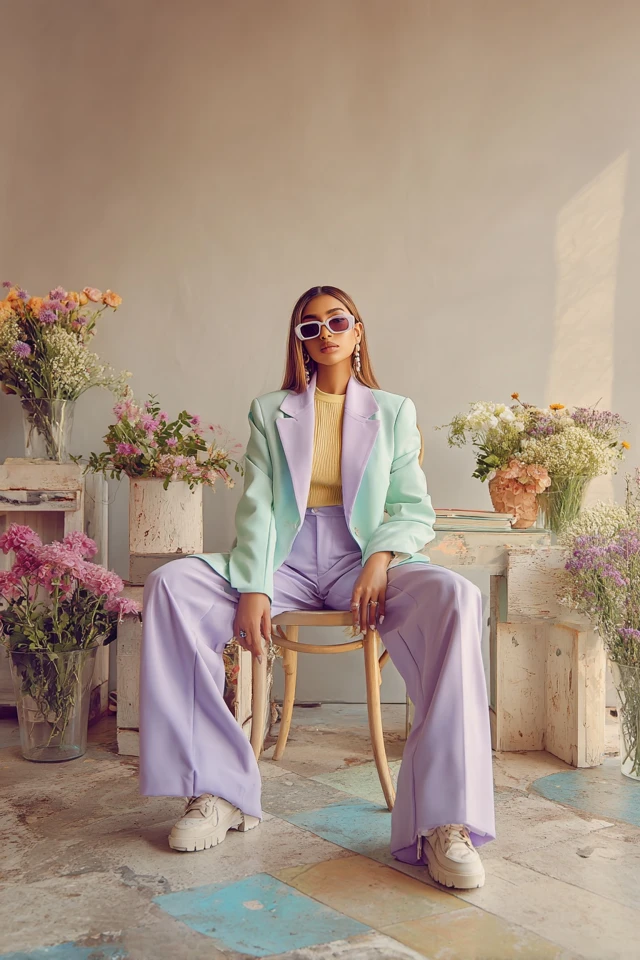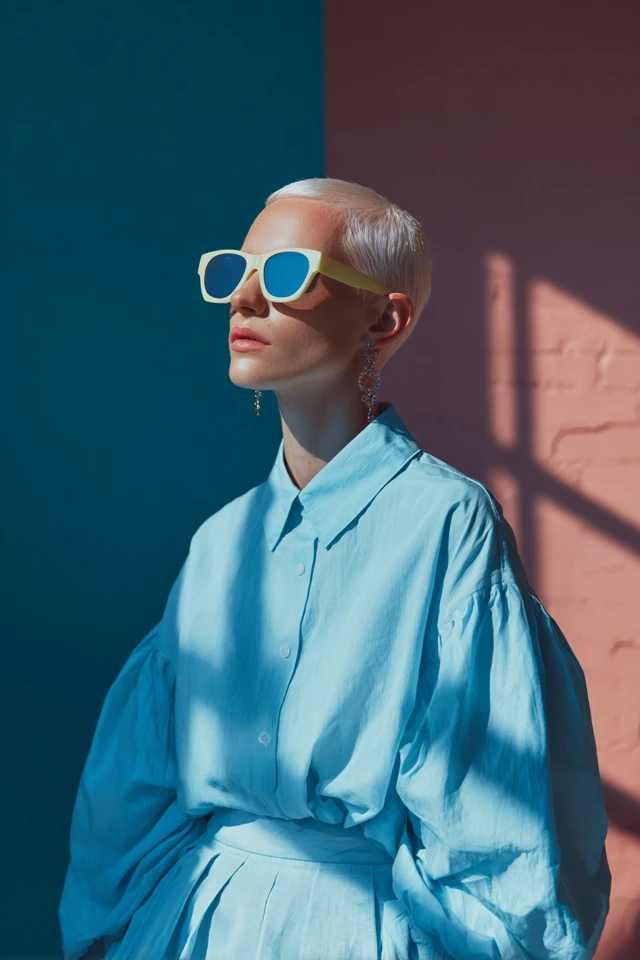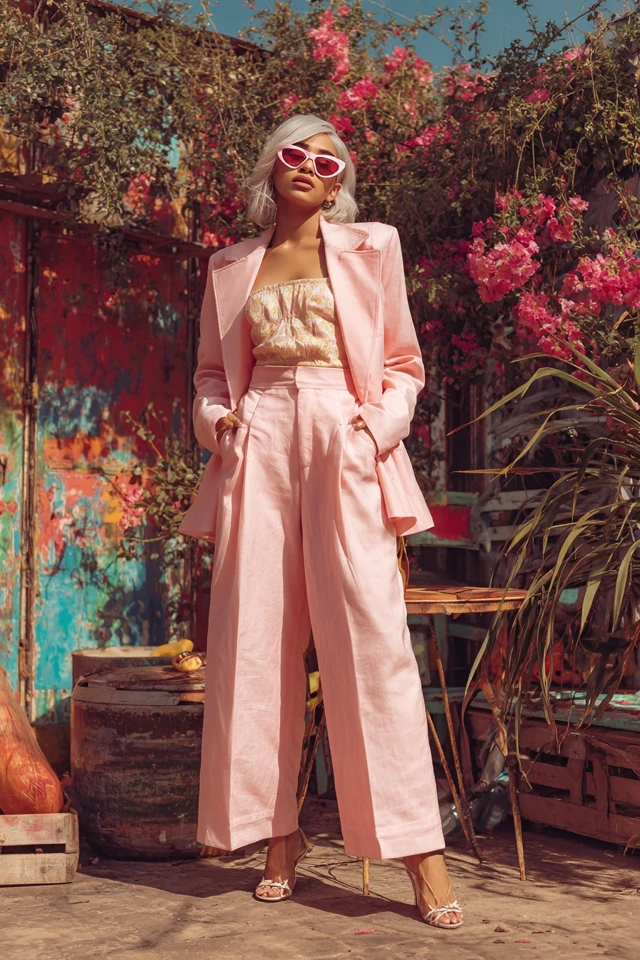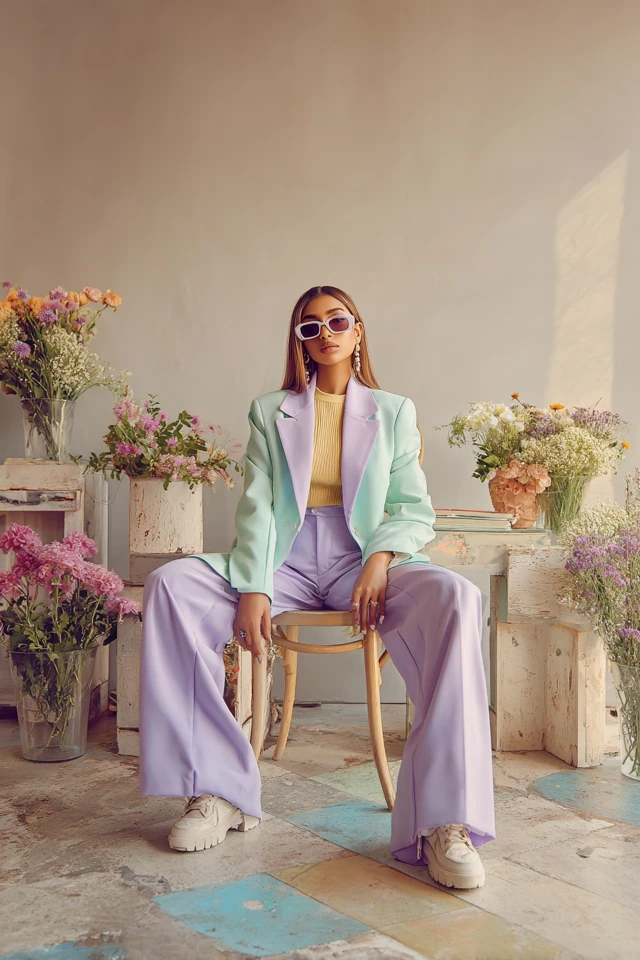Introduction
I still clearly remember the first time I consciously chose a pastel hue to wear for a significant occasion. It wasn’t just about the soft blush pink blouse or the gentle mint cardigan; it was about how these colors subtly shifted my confidence, how they invited others in, and how they mirrored a calm but assured version of myself. Wearing pastel tones felt like wrapping myself in comfort and quiet strength at once—a feeling that every woman deserves to experience through her fashion choices.
Pastel hues have a unique charm. They seem to hold a gentle power that is sometimes overlooked in a world dominated by bold, saturated colors. But their understated nature allows for versatility and emotional warmth that can soften, brighten, and refresh your entire wardrobe. Understanding how to harness these colors not only enhances your style but also taps into the psychological benefits of color, imbuing your daily dressing with both intention and joy.
About the Author and My Trend Boutique
This post dives deeply into the transformative magic of comfy pastel hues—from the science of color psychology and trend forecasting to practical styling tips tailored to various body types and personal styles. If you’ve ever wondered how to elegantly integrate pastel tones into your wardrobe while feeling confident and authentic, you’ve come to the right place.
Foundational Concepts
To truly appreciate and style comfy pastel hues, it’s essential to understand some key foundational concepts. These include color psychology, trend forecasting, and the age-old practice of dressing to impress—each playing a crucial role in how pastel shades influence both our perception and our personal expression.
Color Psychology
Color psychology is the study of how colors impact human behavior, emotions, and decision-making. Pastels, characterized by their softness and lower saturation, tend to evoke feelings of tranquility, kindness, and approachability. For example, soft lavender is often linked with calmness and creativity, while light peach can inspire warmth and friendliness. In fashion, these associations mean that wearing pastel colors can subtly influence how others perceive you—as gentle yet confident, open yet poised.
Research in color psychology reveals that even subtle shifts in hue can affect mood and social interaction, serving as a powerful tool when intentionally selected. This science is invaluable when building a wardrobe that supports your emotional well-being.
Trend Forecasting
Trend forecasting is the analysis and prediction of upcoming styles, colors, and fabric preferences in the fashion industry. Pastel colors regularly experience cycles of renewed popularity due to their versatility and soft appeal. This cyclical nature means understanding when and how pastels fit into the broader fashion landscape is crucial for making pieces feel fresh yet timeless.
For instance, forecasting agencies often detect pastel shades emerging on runways and street style during transitional seasons, signaling opportunities to incorporate delicate colors in layering and accessories. Staying informed about these trends helps you invest wisely and stay stylish without chasing fleeting fads.
Dressing to Impress
Dressing to impress isn’t just about the outside gaze but about aligning your outfit with your goals and personality. Pastels, by their very nature, invite a more approachable, softer impression while maintaining sophistication. For professionals or creatives aiming to convey calm confidence, pastels merge comfort with polish, making them ideal choices for business casual looks, interviews, or even casual social gatherings.
Mastering the art of dressing to impress with pastels involves balancing hue, fit, and fabric quality to ensure your look is cohesive and intentional. It’s about wearing colors that harmonize with your personality and occasion, enhancing your self-assurance through style.
Picture Gallery




Color Psychology & Emotional Impact
Colors speak a silent language rooted deeply in human psychology, and pastel hues have their own dialect. Their emotional impact is often underestimated, yet it is profound—soft colors communicate serenity, lightheartedness, and subtle optimism, all of which play significant roles in how we feel and how others respond to us.
Scientific studies have shown that first impressions form within seconds, with color being a key component. Pastels, with their muted tones, tend to be perceived as non-threatening and approachable, facilitating easier social connections. For instance, a gentle sky blue dress can evoke trust and calmness, perfect for meetings or networking. Conversely, wearing overly bright or dark colors might convey intensity or authority, which isn’t always desired.
Moreover, pastel shades can influence self-confidence by offering a visual softness that invites comfort. When you feel emotionally supported by your clothing, you carry yourself with greater ease and confidence. This cyclical effect—color boosting mood, mood enhancing posture—illustrates why incorporating pastel hues is more than a fashion choice; it is a strategy for enhancing emotional well-being.
Personal Style & Body Type Considerations
Effectively styling pastel hues means respecting your unique body shape, skin tone, and personal style preferences. Pastels are wonderfully versatile, but understanding their relationships with your body’s natural lines and complexion can transform your look.
Silhouettes & Fabrics
Light, breezy fabrics like chiffon, silk, or soft cotton blends pair beautifully with pastel colors, enhancing the overall softness. For example, an A-line pastel skirt can highlight a pear-shaped figure gracefully, while a tailored pastel blazer complements a rectangular body type by adding structured dimension.
For apple shapes, pastel tops with subtle draping and darker bottoms create balanced proportions, whereas inverted triangle figures benefit from pastel shades on bottoms to even out broader shoulders.
Complexion & Hue Matching
Understanding undertones is crucial for pastel color harmony. Those with cool undertones glow in pastel blues, lilacs, and icy pinks, while warmer undertones come alive with peach, apricot, and soft yellows. Neutral undertones have the unique advantage of pairing well with nearly all pastel shades, allowing greater experimentation.
Quick Checklist: Is Pastel Right for You?
- Do you prefer soft, understated colors that make you approachable? Pastels are ideal.
- Are you comfortable experimenting with layering light tones? Great way to incorporate multiple pastel hues.
- Is your skin tone cool, warm, or neutral? Choose pastels accordingly to complement your undertones.
- Do you want to enhance softness without losing style edge? Pair pastels with structured silhouettes.
- Do you tend toward minimal or eclectic style? Pastels adapt nicely, just vary fabrics and accessories.
Current Trends & Timeless Classics
Pastels remain a staple in fashion’s color wheel, blending contemporary trends with timeless elegance. Currently, soft mint greens, baby blues, and blush pinks are making headlines in spring and summer collections, reflecting renewed interest in gentle, nature-inspired palettes.
A notable trend is “pastel layering,” where multiple light hues are worn together in a harmonious color story—think a lavender blouse beneath a pale yellow trench coat. This creates a fresh, multidimensional look that feels right for both urban and relaxed settings.
Balancing trend-driven pastel pieces with classics such as white denim, tailored beige trousers, or navy blazers ensures your outfit remains sophisticated and wearable beyond seasons. Additionally, timeless pastel staples—like a pastel cashmere sweater or silk scarves—can elevate basic outfits instantly.
Integrating pastel shades into your wardrobe doesn’t mean abandoning your established style; instead, it enriches your options for expressing different moods and occasions.
Practical Tips & Recommendations
Incorporating comfy pastel hues into your wardrobe should be fun and manageable. Here are actionable tips to get started and maintain a chic pastel-filled closet:
- Start small: Begin with pastel accessories like scarves, handbags, or shoes to test how these colors work with your existing outfits.
- Layer thoughtfully: Pair pastel layers with neutrals such as cream, tan, or soft gray for a balanced look.
- Choose quality fabrics: Invest in natural fibers like cotton, linen, or silk, which hold pastel dyes beautifully and feel comfortable on skin.
- Mix textures: Combining smooth satin with textured knits or soft denim in pastel shades adds depth to your look.
- Maintain your pastels well: Use gentle detergents and air dry to keep colors vibrant. Store out of direct sunlight to prevent fading.
When shopping, seek out versatile pastel pieces—such as a blush pink blouse that works from office to weekend or a soft blue sweater perfect for layering with a blazer. Consider the color-swatch images found in quality fashion sources to visualize combinations before purchasing.
Accessories play a big role too. Pastel pearls, rose gold jewelry, or mint green eyewear frames can subtly complement your outfit while maintaining the pastel theme.
FAQs
- Q: How do I find my signature pastel color?
A: Experiment with different pastel shades while considering your skin undertone and personal comfort. Pastel pink, lavender, or mint often serve as great starting points. - Q: Can pastel colors be worn year-round?
A: Absolutely. While pastels are associated with spring and summer, darker pastel shades and layering make them suitable for cooler months too. - Q: How do I incorporate pastels on a budget?
A: Focus on smaller pastel items like accessories or modest investments in tops or cardigans. Secondhand shops often have excellent pastel finds. - Q: What pastel colors suit deeper skin tones best?
A: Richer pastels like lavender, peach, or dusty rose beautifully complement deeper complexions. - Q: How do I build a pastel capsule wardrobe?
A: Select versatile pastel basics that mix well with neutral staples. Include layering pieces, bottoms, and accessories in a cohesive pastel palette.
Conclusion
Comfy pastel hues offer more than just aesthetic appeal—they are a gateway into a softer, more inviting style that nurtures confidence and emotional well-being. By understanding color psychology, adapting to personal body shapes, and keeping abreast of trends alongside classic wardrobe pieces, you can seamlessly integrate pastels into your fashion repertoire.
Remember, style is a form of self-expression, and pastel hues provide a wonderful canvas for your creativity. Allow yourself to experiment with shades, textures, and combinations that reflect your mood and identity. The journey of discovering your pastel power is both rewarding and endlessly inspiring.
I invite you to share your experiences, styling successes, and questions in the comments section below. Don’t forget to subscribe for more insights on color psychology, trends, and dressing to impress. Here’s to embracing comfy pastel hues and stepping confidently into your best style yet!


